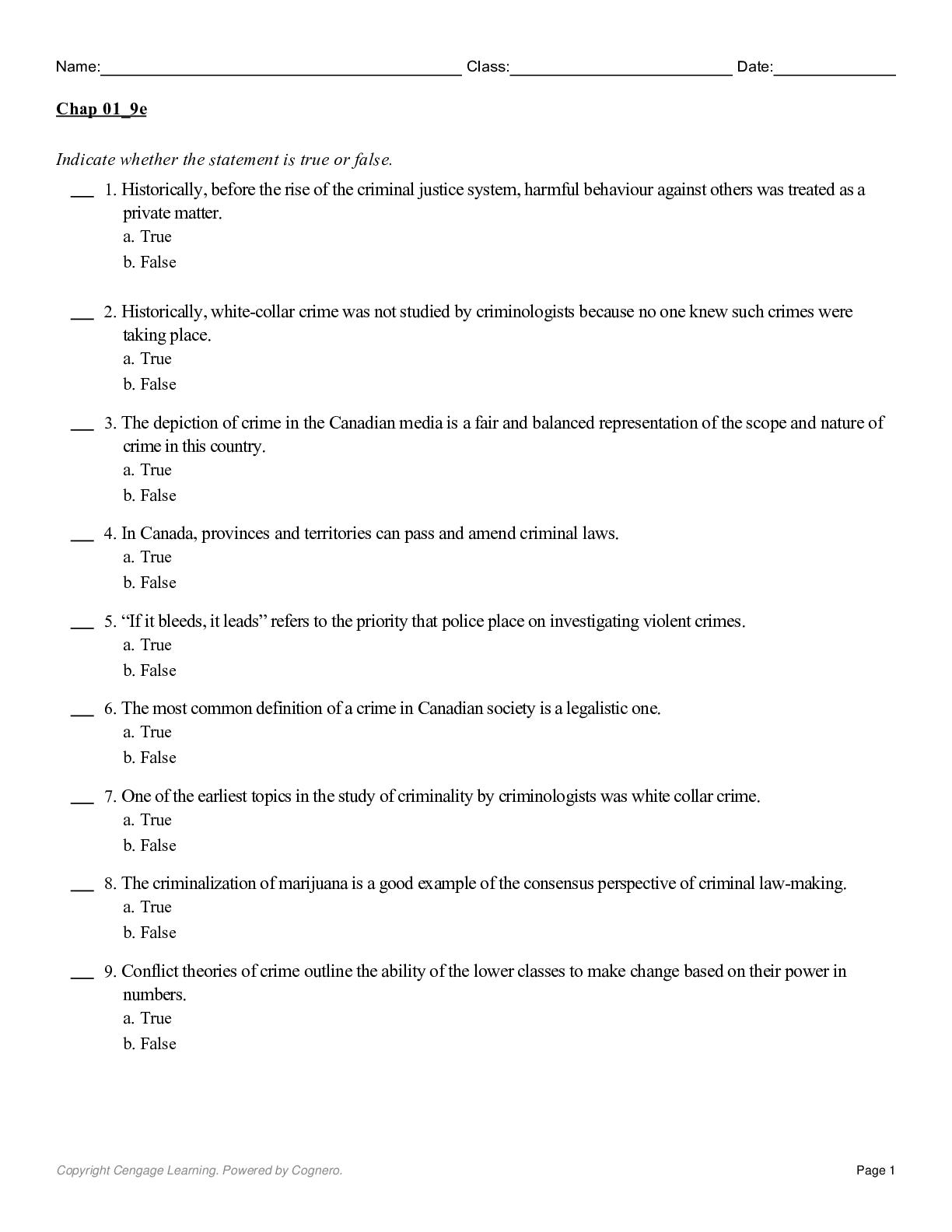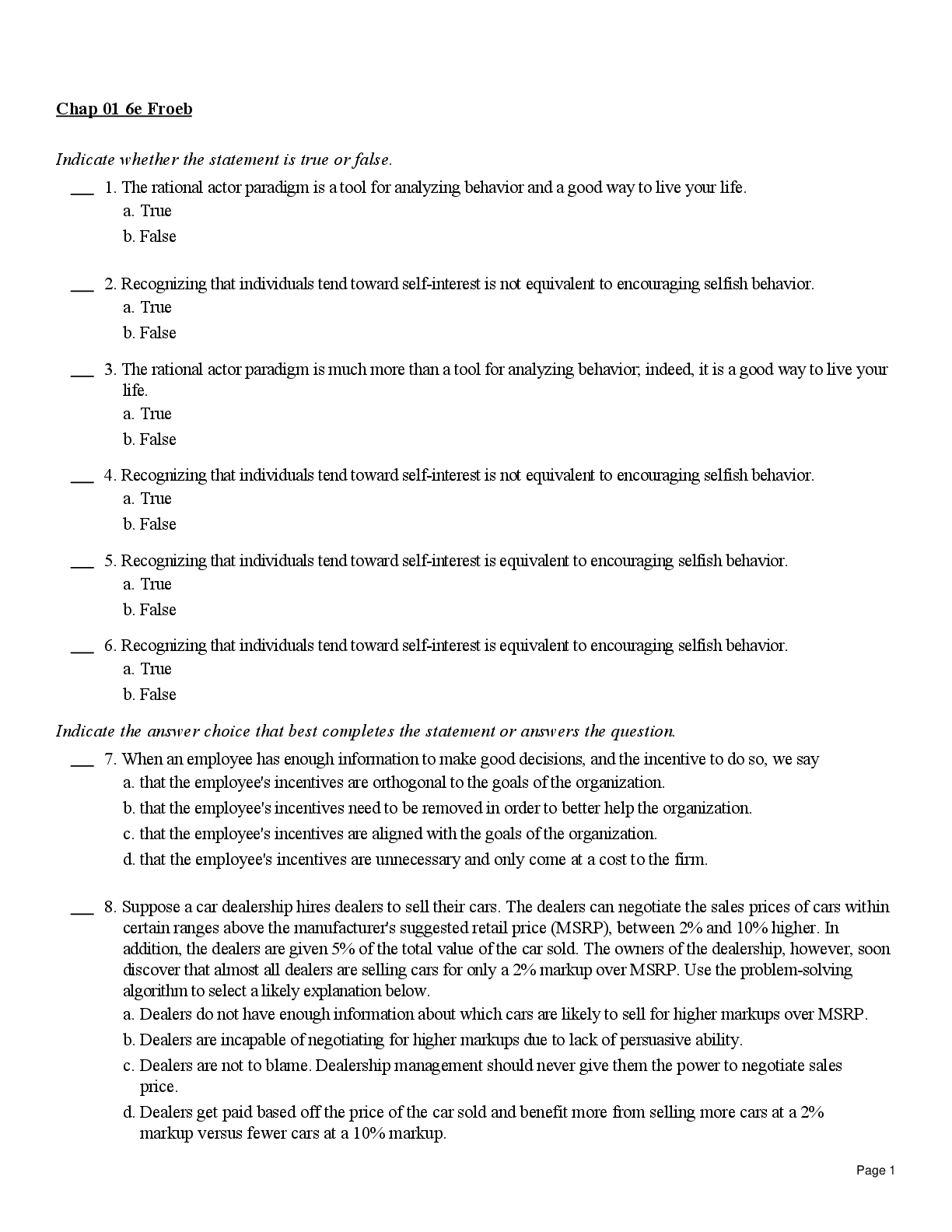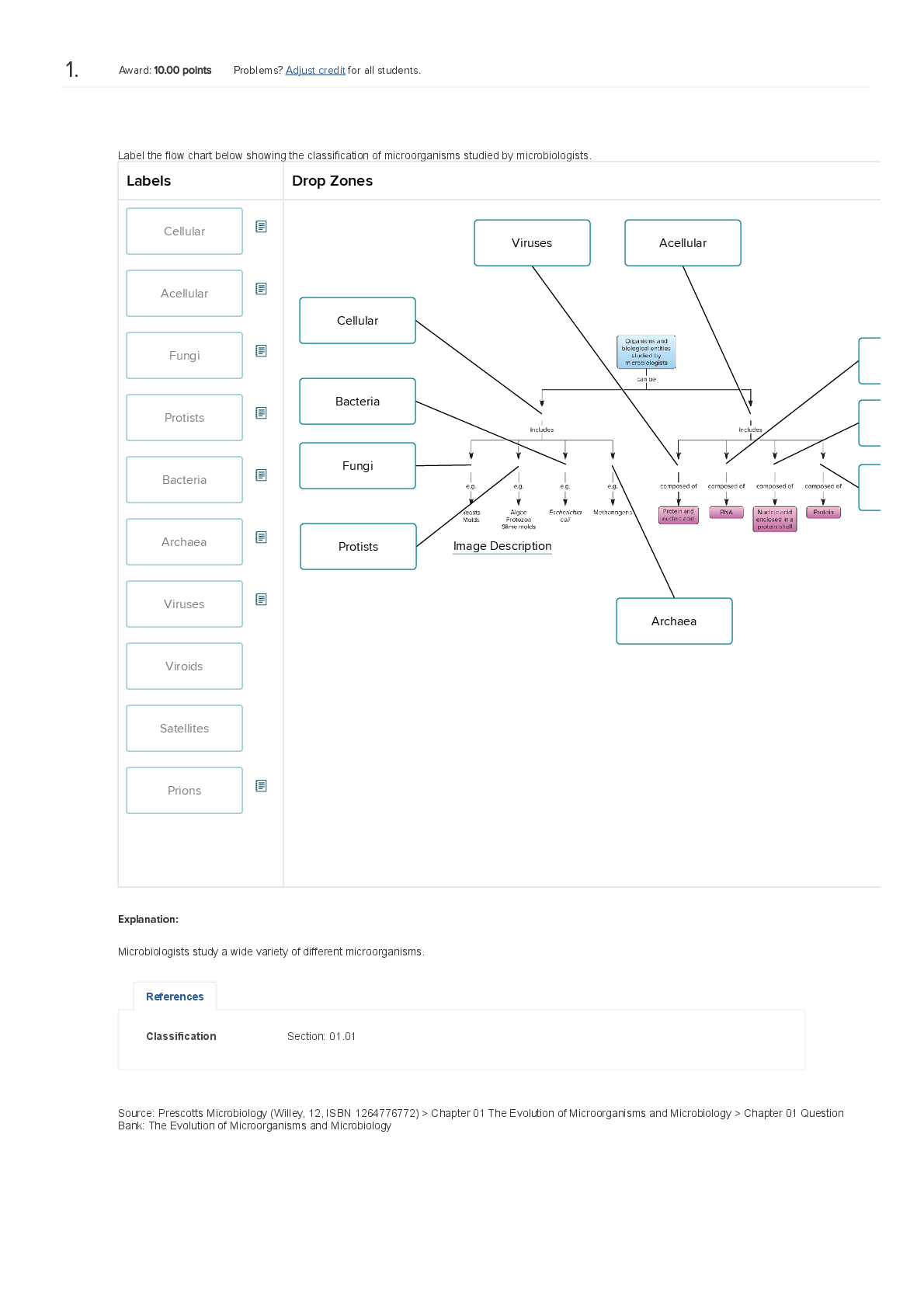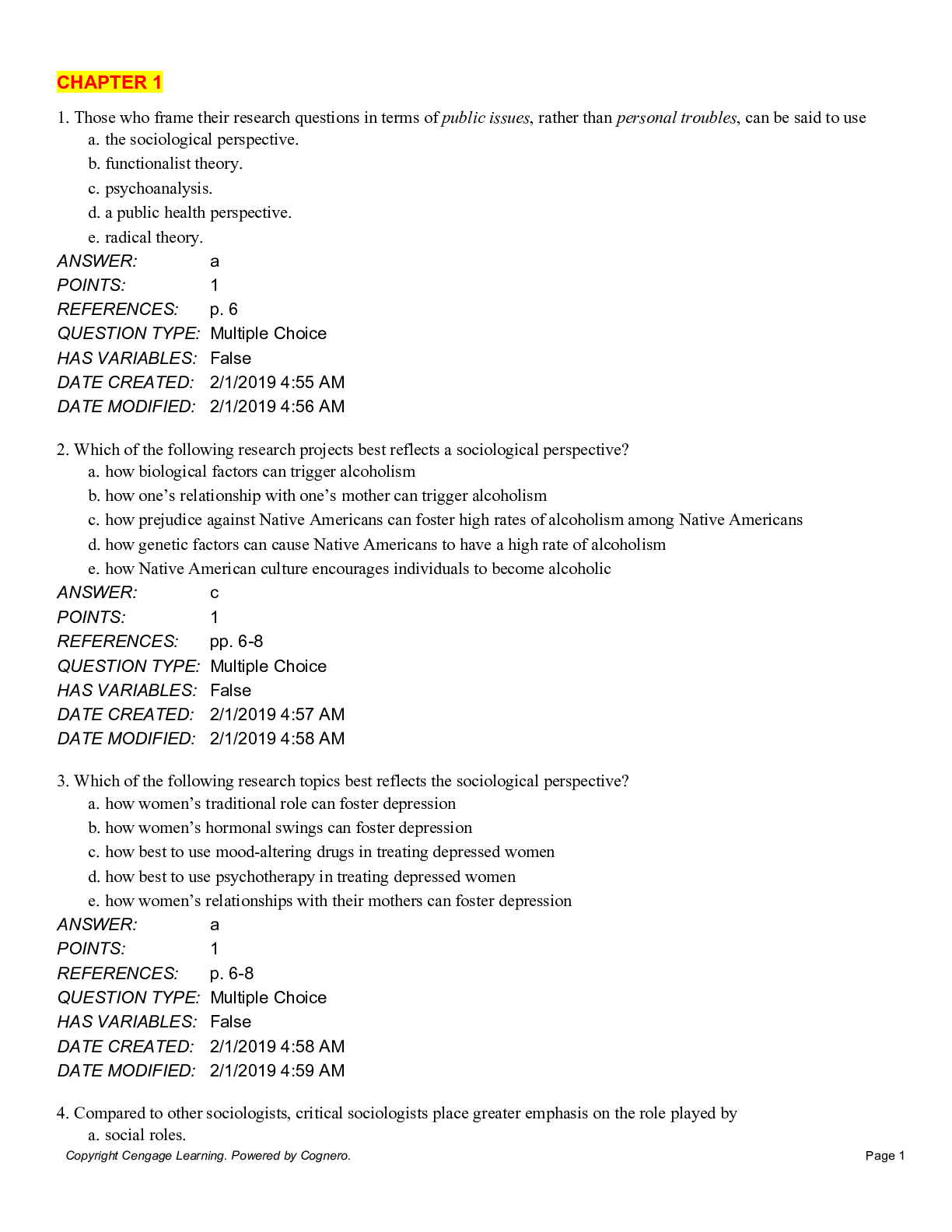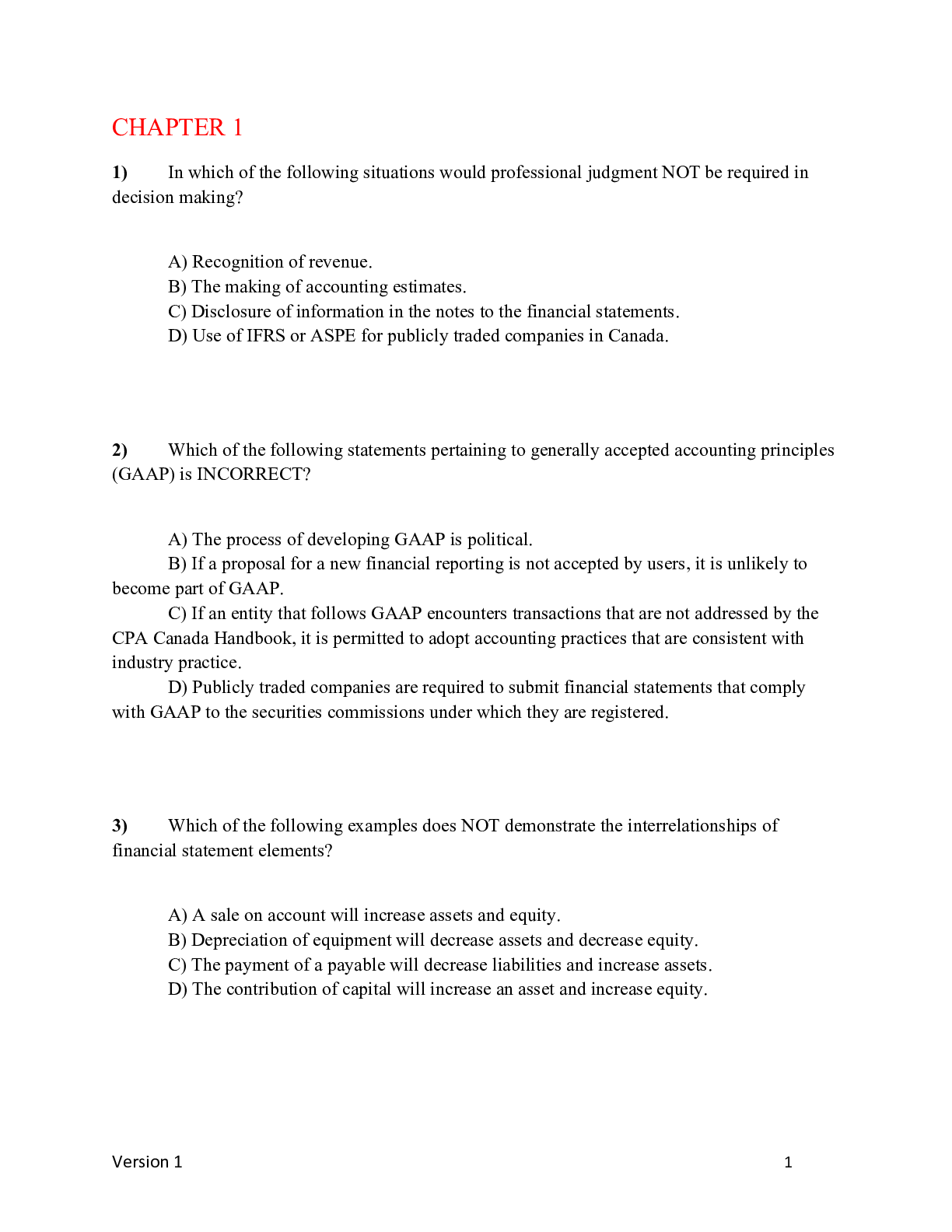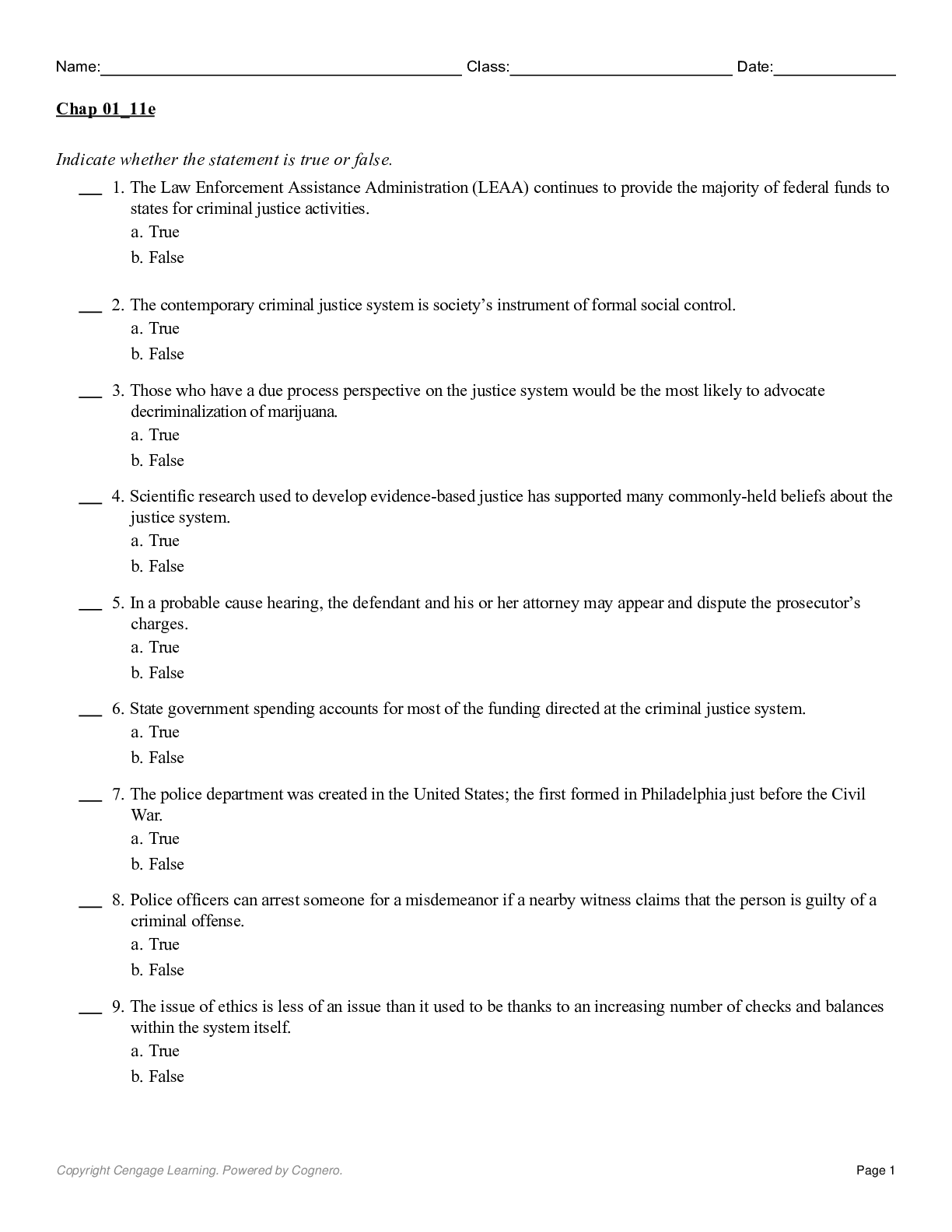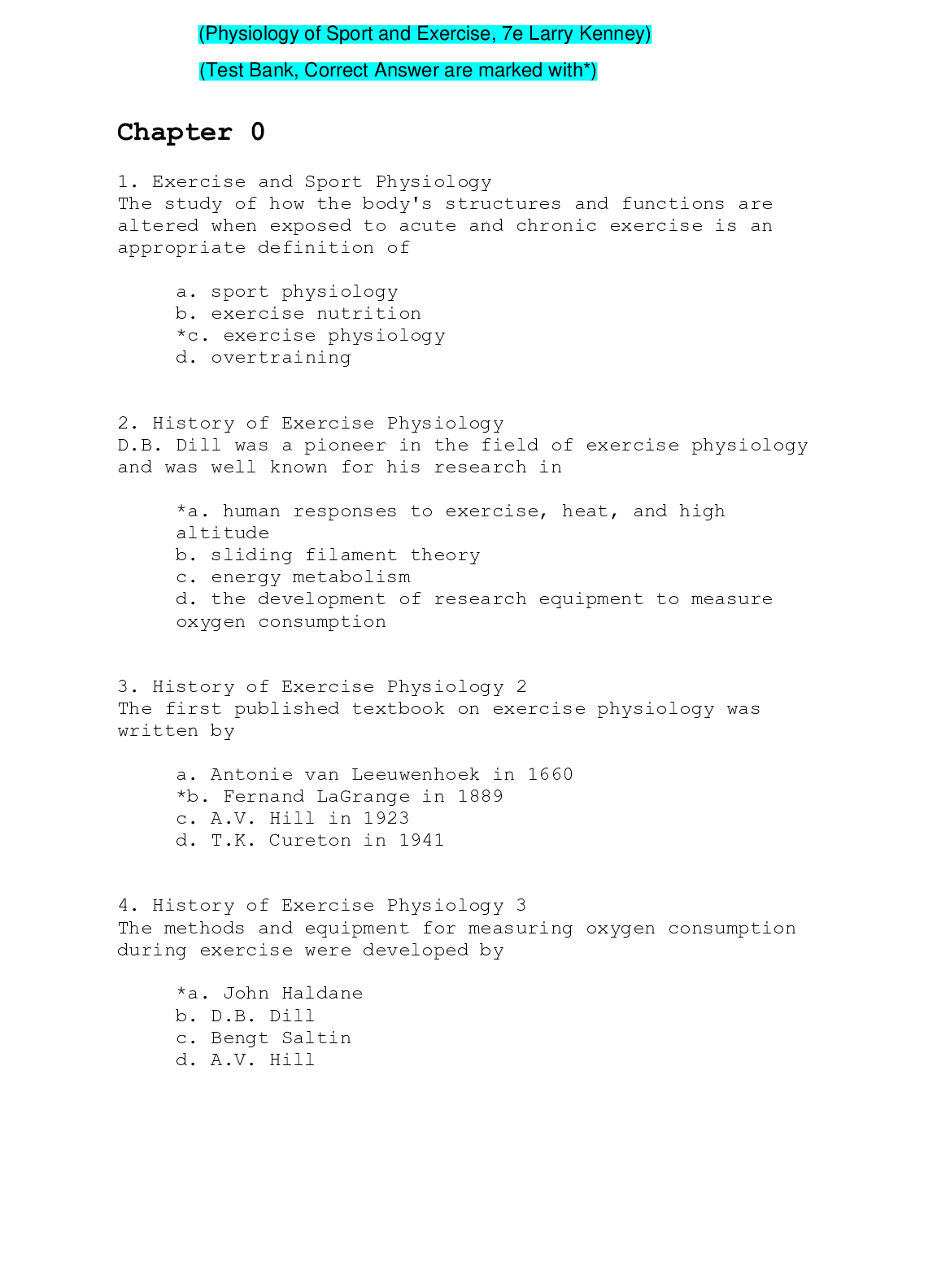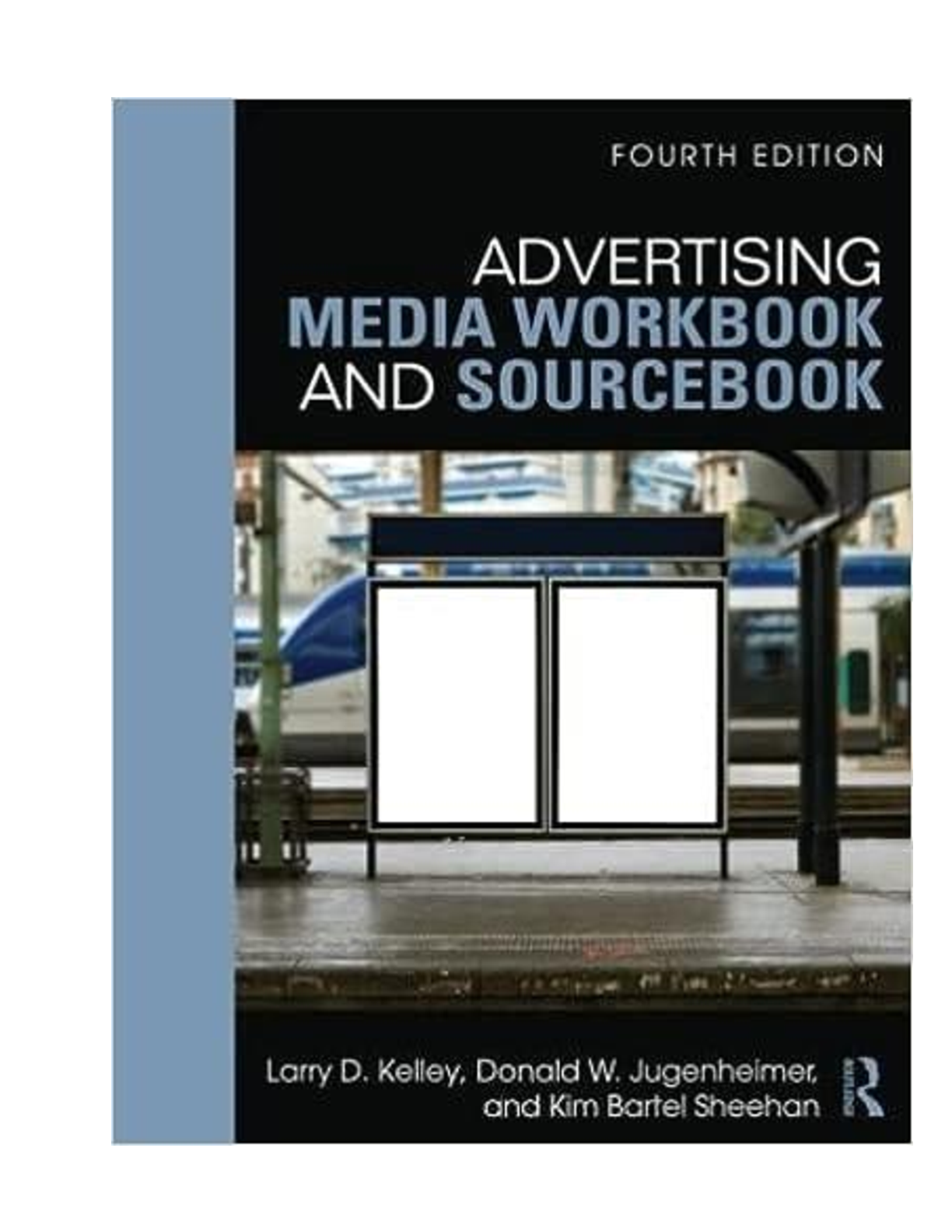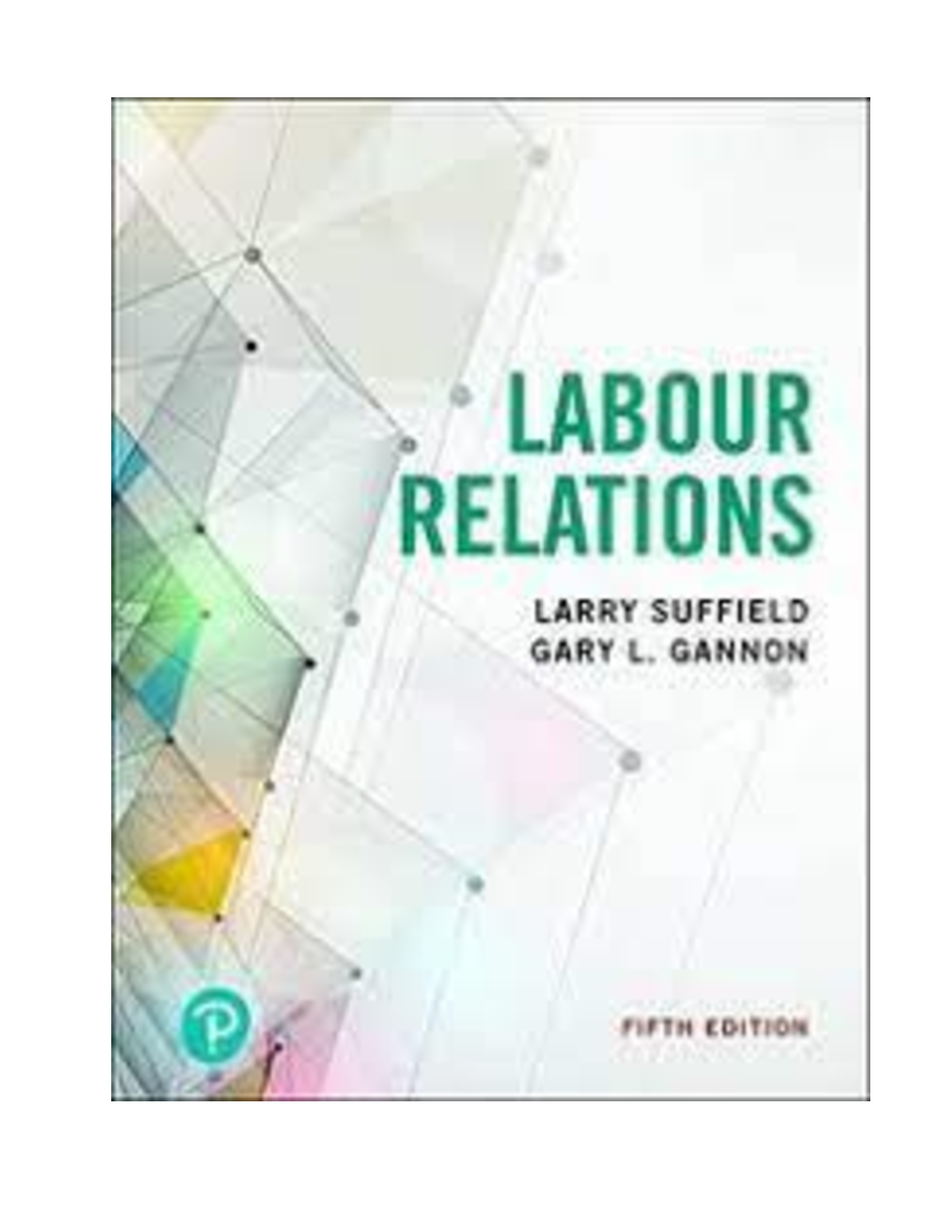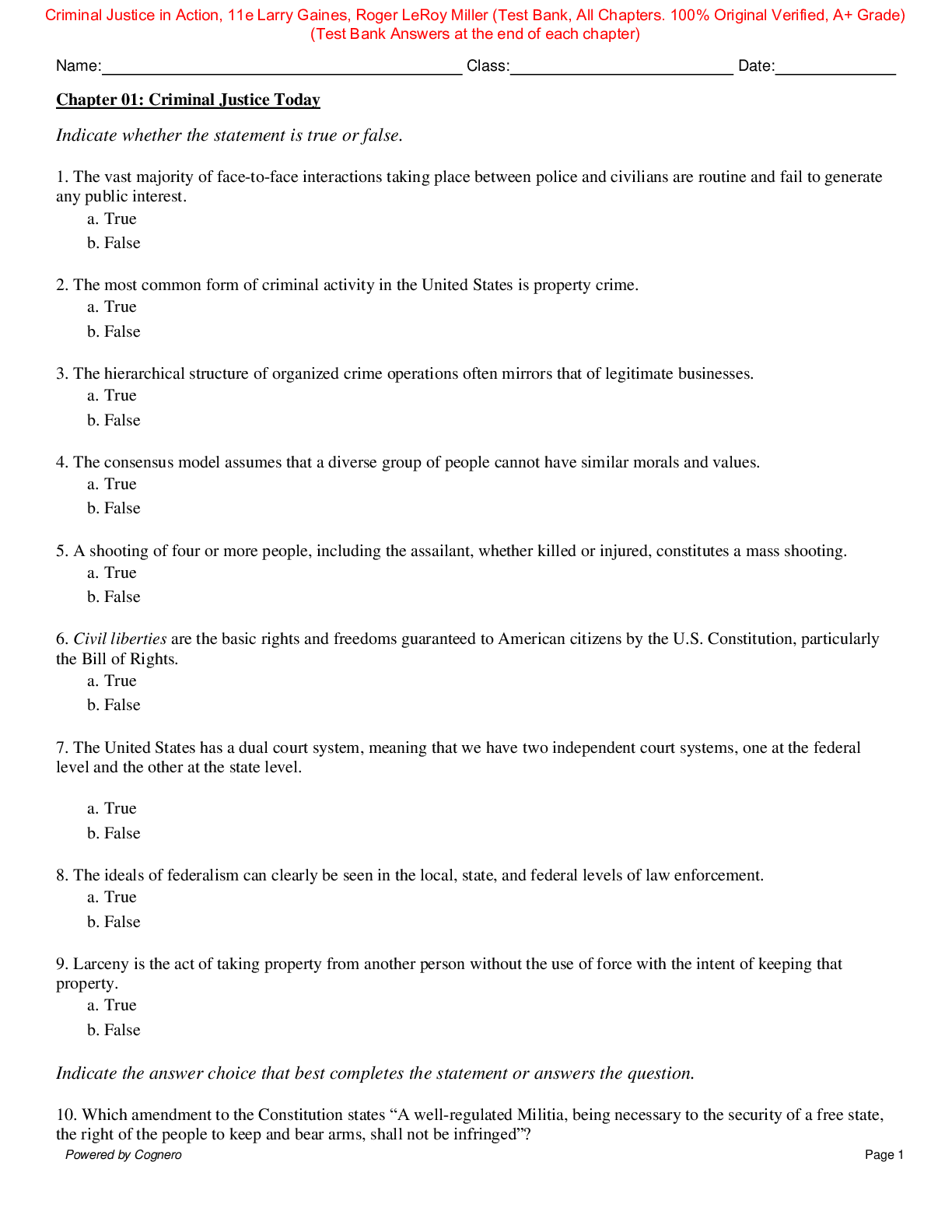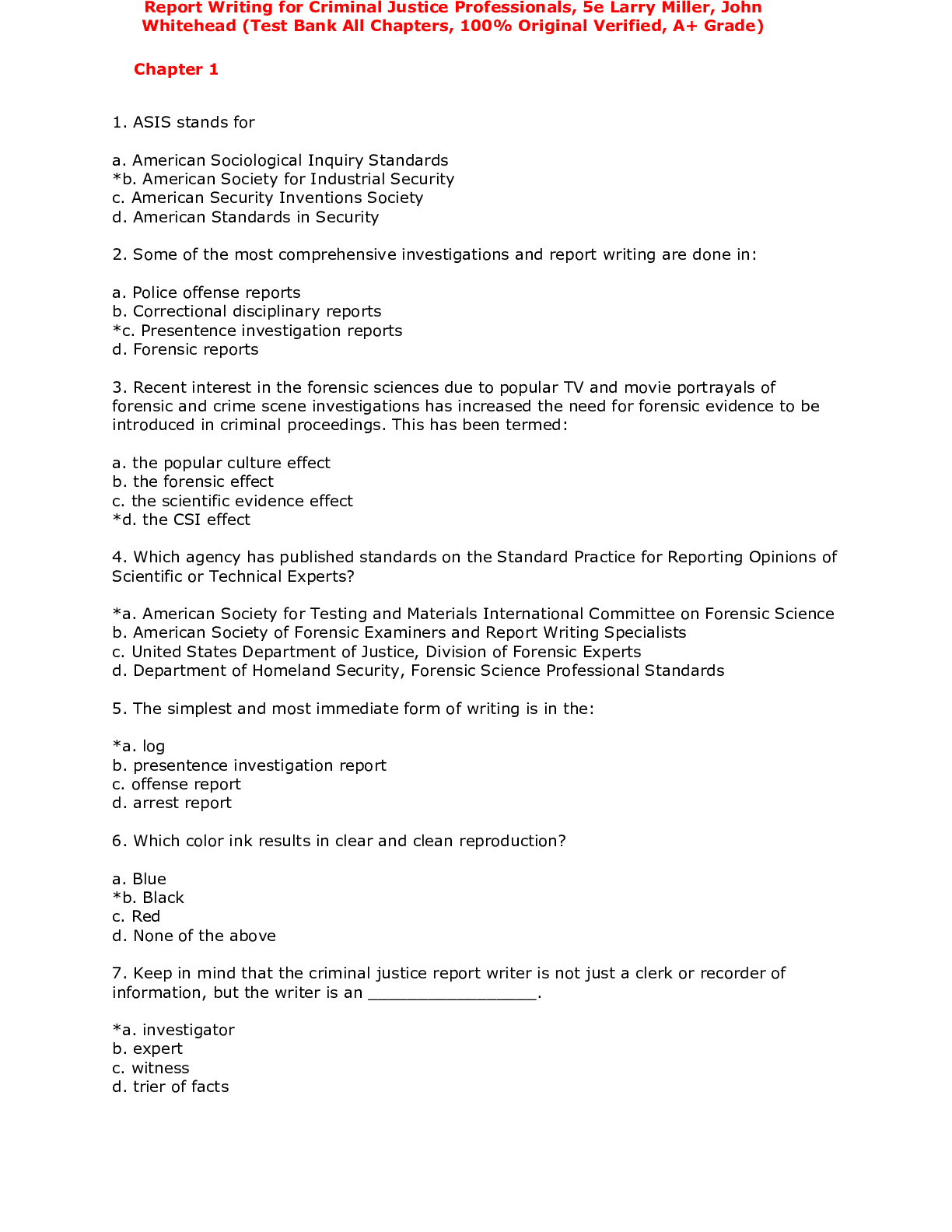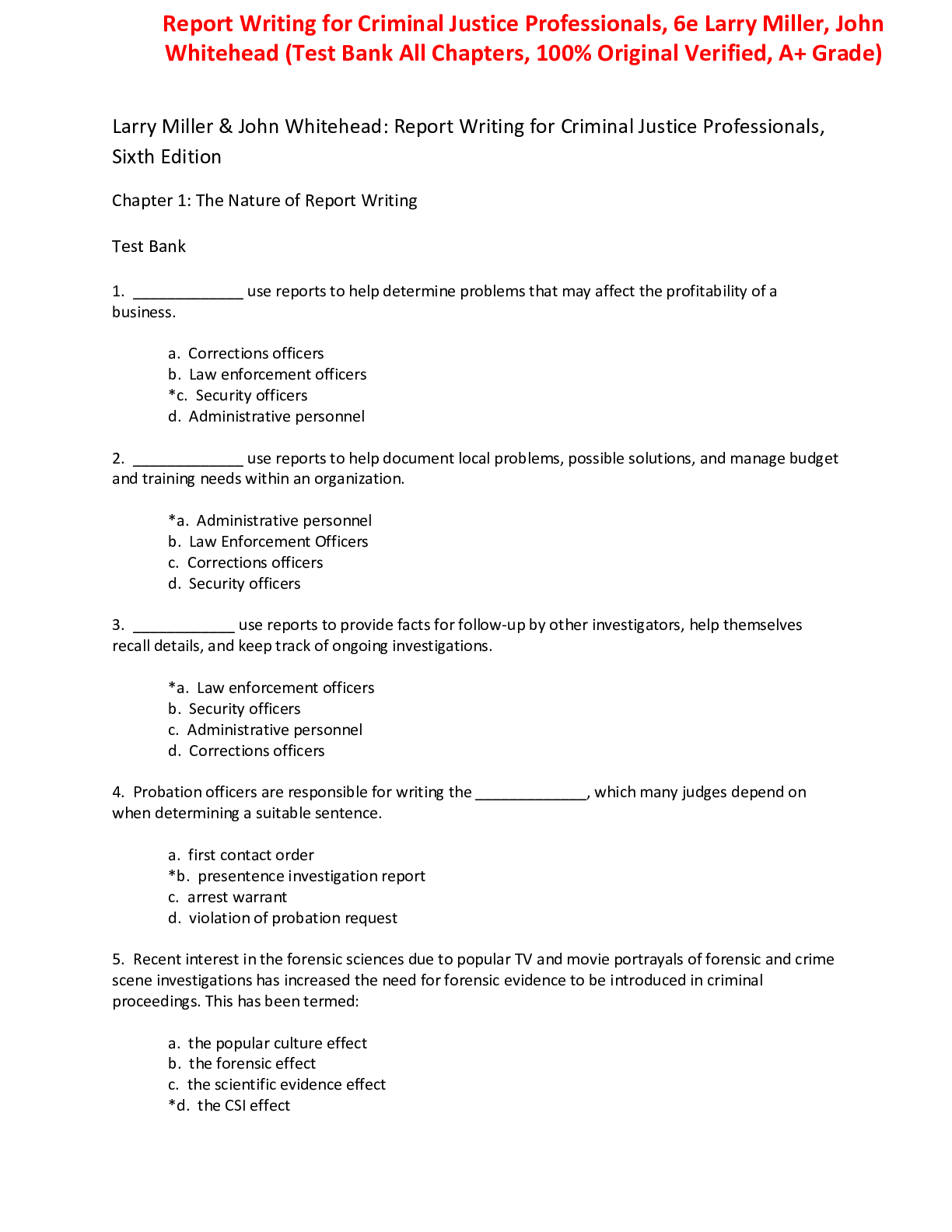Management > TEST BANKS > Test Bank Labour Relations, 5th Edition by Larry Suffield; Gary Gannon (All)
Test Bank Labour Relations, 5th Edition by Larry Suffield; Gary Gannon
Document Content and Description Below
Test Bank for Labour Relations, 5ce, 5th Canadian Edition by Larry Suffield,Andrew Templer TEST BANK ISBN-13: 9780135359570 Full chapters included 1 Introduction to Labour Relations Defining L... abour Relations, Industrial Relations and Employee Relations HRM Professionals and Labour Relations Labour Relations Issue 1-1 Labour Relations Questions The Employment Relationship in Non-union and Union Settings The Employment Relationship Key Considerations 1-1 Non-union vs. Unionized Workplaces The Development of Unions and Labour Relations in Canada Key Considerations 1-2 Events in the Development of Labour Relations Early Unions Entry and Influence of International Unions Early Labour Legislation and the Rise of Industrial Unions Public-Sector Unionization Frameworks for Labour Relations Industrial Relations Systems Approach—John Dunlop Key Considerations 1-3 Elements of Dunlop’s IR Systems Model “Open-system” Industrial Relations—Alton Craig Political Economy Approach Overview of This Book 2 The Environment Economic Environment Macroeconomic Environment Government Economic Policy Industry and Firm-Level Demand Other Economic Trends Affecting Labour Relations Technology Demographics Social Environment Political Environment Labour Relations Issue 2-1 What Are Your Values and Beliefs Relating to Unions? Divided Jurisdiction Legal Environment Human Rights Legislation Key Considerations 2-1 Possible Measures to Accommodate Key Considerations 2-2 Factors Determining Undue Hardship Labour Relations Issue 2-2 When Is a Discriminatory Requirement a BFOR? The Canadian Charter of Rights and Freedoms 3 Employers: Objectives, Processes and Strategy Management Objectives and Processes Efficiency or Productivity Control Employer Labour Relations Strategy Factors Affecting an Employer’s Labour Relations Strategy Possible Employer Strategies Strategies of Canadian Employers Importance of Labour Relations Strategy Alternative HR Strategies or Approaches to HR Management High-Performance Work Systems Key Considerations 3-1 Policies and Practices for a High-Performance Work System Employee Relations Programs Employee Communications Key Considerations 3-2 Best Practices in Employee Communications Staff Recognition Programs Employee Involvement Forms of Employee Involvement Employee Involvement Under the Collective Agreement Employee Involvement Outside of the Collective Agreement Labour Relations Issue 3-1 Employee Involvement – Joint Union–Management Committees Further Considerations for Employee Involvement Programs Outcomes of Employee Involvement Key Considerations 3-3 A Progressive Discipline Framework Diversity Management 4 Unions: Objectives, Processes and Structure Unions in Canada Extent of Unionization Types of Unions Union Objectives and Processes Improving Terms and Conditions of Work Protecting Employees Against Arbitrary Management Action Providing a Process for Conflict Resolution and Employee Input Pursuing Economic and Social Change Union Structure and Functions Union Local Key Considerations 4-1 Functions of a Union Local Independent Local Unions National and International Unions Key Considerations 4-2 Functions of National and International Unions Labour Relations Issue 4-1 The Relationship Between a National Union, Union Local and Union Members Labour Federations and Congresses Key Considerations 4-3 Functions of the Canadian Labour Congress Labour Relations Issue 4-2 Unifor Splits from Canadian Labour Congress Labour Councils Other Features of Union Structure 5 Governments, Labour Relations Boards and Other Parties Government Objectives and Processes Regulation of Labour Relations Processes Regulation of Labour Relations Outcomes Protection of the Public Interest Regulation of the Economy Assistance to Industry Regulating Market Practices and Results Government Employers: Objectives Maintaining Office Labour Relations Boards Composition of Labour Relations Boards Key Considerations 5-1 Labour Relations Board Responsibilities Board Responsibilities Procedure and Remedies Labour Relations Issue 5-1 Labour Relations Boards: Part of a Tri-Partite Employment Relationship Other Parties Arbitrators Courts Human Rights Tribunals 6 Union Organizing Drive and Certification The Decision to Unionize Why Employees Unionize Why Employees Do Not Join a Union External Factors Affecting Unionization How Bargaining Rights Are Obtained and Their Significance Certification of a Union Organizing Campaign Application for Certification to Labour Relations Board Labour Relations Issue 6-1 Determining Employee Status: The Fourfold Test Determination of Union Support Conduct During Organizing and Certification Processes Employer Unfair Labour Practices Key Considerations 6-1 Employer Unfair Labour Practices Permissible Employer Conduct Key Considerations 6-2 Permitted Employer Conduct During an Organizing Campaign Labour Relations Issue 6-2 What Employers Have Said in Response to a Union Organizing Campaign Union Unfair Labour Practices Remedies for Unfair Labour Practices Decertification Decertification Application by Employees Certification of a Different Union Additional Grounds for Decertification Successor Rights 7 The Collective Agreement Introduction Collective Agreement Contents Legal Requirements for Collective Agreements Mandatory Terms Union Recognition Key Considerations 7-1 Union Recognition Grievance and Arbitration Process Key Considerations 7-2 Grievance and Arbitration Procedure Strikes and Lockouts Duration or Term of the Agreement Voluntary Terms Management Rights Labour Relations Issue 7-1 Does Management Have to Act Reasonably? Bargaining Unit Work Union Security Key Considerations 7-3 Protection of Bargaining Unit Work Key Considerations 7-4 Union Security Labour Relations Issue 7-2 Can the Collective Agreement Prevent Probationary Employees from Challeng Seniority Key Considerations 7-5 Seniority Definition, Establishment and Termination Labour Relations Issue 7-3 Seniority Accumulation Protection During Disability and Pregnancy & Paren Seniority: Application to Layoffs, Recalls and Job Vacancies Key Considerations 7-6 Seniority Application to Layoffs, Recalls and Job Vacancies Key Considerations 7-7 Discipline and Discharge Discipline and Discharge Hours of Work and Scheduling Key Considerations 7-8 Hours of Work and Scheduling Overtime Key Considerations 7-9 Overtime Public Holidays Vacation Key Considerations 7-10 Holidays and Holiday Pay Key Considerations 7-11 Vacations Leave of Absences Key Considerations 7-12 Leave of Absences Wages Benefits Key Considerations 7-13 Benefits Key Considerations 7-14 Health and Safety Health and Safety Technological Change Key Considerations 7-15 Technological Change Contracting Out Union Business Key Considerations 7-16 Contracting Out Prohibited Terms Key Considerations 7-17 Union Business 8 Negotiation of the Collective Agreement Bargaining Structure Possible Bargaining Structures Centralized vs. Decentralized Bargaining Informal Bargaining Structure Sub-processes in Negotiation Intra-organizational Bargaining Distributive Bargaining Integrative Bargaining Attitudinal Structuring: Shaping the Parties’ Attitudes and Relationships Implications of Sub-processes in Negotiation Union–Management Relationship Types of Union–Management Relationships Factors Determining the Union–Management Relationship Negotiation Process Notice to Bargain Bargaining Teams Preparations for Negotiation Labour Relations Issue 8-1 Principles for Collective Bargaining – Canadian Labour Congress Meetings of the Bargaining Teams Duty to Bargain in Good Faith Key Considerations 8-1 Stages of Negotiation First Contract Arbitration Strategies and Tactics in Distributive Bargaining Bargaining Power Labour Relations Issue 8-2 Should Labour Relations Legislation Prohibit the Use of Replacement Worke Conciliation, Mediation and Interest Arbitration Memorandum of Settlement and Ratification Interest-Based or Mutual Gains Bargaining Key Considerations 8-2 Principles for Interest-Based Bargaining from Getting to Yes Interest-Based Bargaining: An Illustration Adoption of Interest-Based Bargaining 9 Strikes, Lockouts and Contract Dispute Resolution Strikes and Lockouts Strikes and Lockouts Defined Labour Relations Issue 9-1 Air Canada Workers Carry Out a Wildcat Strike Functions of Strikes Significance of Strikes Factors Affecting Strikes When Can the Parties Strike or Lockout? Labour Relations Issue 9-2 Should a “Hot Cargo” Clause Be Enforceable? Strike Activity and the End of a Strike Key Considerations 9-1 Reinstatement of Striking Workers Extent of Strike Activity Contract Dispute Resolution Key Considerations 9-2 Contract Dispute Resolution Policy Issues Types of Third-Party Assistance Key Considerations 9-3 Mediators as “Active” Participants in Resolving Disputes in Collective Ba Other Dispute Resolution Methods 10 Administration of the Collective Agreement Management Rights Limitations on the Exercise of Management Rights Seniority Accumulation and Termination of Seniority Labour Relations Issue 10-1 Management-Imposed Dress Code Policy on Tattoos and Body Piercing Found Job Posting and Selection Process Layoffs Recall to Work Following a Layoff Assessing Skill and Ability Key Considerations 10-1 Ways to Increase the Validity and Fairness of Employment Interviews Remedies at Arbitration Human Rights Issues in the Administration of the Agreement Employer and Union Obligations Obligations of Employees in Accommodation The Grievance Process and Arbitration Process Significance of the Grievance and Arbitration Process Functions of Grievances and Arbitration Benefits of Grievances and Arbitration Potential Concerns of Employers Regarding the Grievance Process Grievance Procedures Ownership of the Grievance Grievance Procedural Matters Settlement Agreements Arbitration Rights vs. Interest Arbitration Arbitrators The Arbitration Hearing Arbitration Decisions Arbitrability Labour Relations Issue 10-2 When is a Dispute Arbitrable? Cost of Arbitration Remedies Review of Arbitration Decisions Problems with Arbitration Discipline and Discharge Possible Grounds for Discipline or Discharge Progressive Discipline Procedural Matters Issues and Outcomes at Arbitration Appropriateness of the Penalty Imposed Labour Relations Issue 10-3 Is Surreptitious Video Admissible as Evidence? Key Considerations 10-2 Factors Arbitrators Consider When Reviewing Discipline Imposed by the Employ Last Chance Agreements Implications for Employers and Unions Key Considerations 10-3 Considerations for Employers When Imposing Discipline Key Considerations 10-4 Considerations for Unions Responding to Discipline Non-Disciplinary Measures for Innocent Absenteeism Culpable vs. Innocent Absenteeism Non-disciplinary Discharge Responses Other Than Discharge Duty of Fair Representation Nature of the Union’s Duty of Fair Representation Implications for Employers and Unions 11 Public-Sector Labour Relations The Public Sector: Size and Importance Definition of the Public Sector Scope of the Public Sector Importance of the Public Sector Development of Collective Bargaining in the Public Sector Why Public-Sector Employees Were Not Allowed to Unionize Employee Associations Collective Bargaining Rights Extended to the Public Sector Labour Relations Issue 11-1 Should Teachers Be Allowed to Strike? Distinctive Features of Public-Sector Labour Relations Employers Unions and Their Members Legislative Framework Establishment of Bargaining Rights Scope of Contract Negotiation Contract Dispute Resolution Key Considerations 11-1 Advantages and Disadvantages of Alternative Contract Dispute Resolution (CDR Recent Developments in Public-Sector Labour Relations Economy Political and Social Environment Public-Sector Compensation 12 The Future of Unions The Impact of Demographics Key Considerations 12-1 The Five Generation Workplace Age Labour Relations Issue 12-1 Why Youth and Unions Can’t Seem to See Eye to Eye Gender Labour Relations Issue 12-2 UFCW Women and Gender Committee Visible Minorities, Aboriginals and LGBTQ Economic Trends Labour Relations Issue 12-3 Canada’s Unions Support Canadian Retaliation Against American Steel an Globalization Labour Relations Issue 12-4 Future Union Strategies to Deal with Globalization [Show More]
Last updated: 2 months ago
Preview 10 out of 151 pages

Loading document previews ...
Buy this document to get the full access instantly
Instant Download Access after purchase
Buy NowInstant download
We Accept:

Reviews( 0 )
$25.00
Can't find what you want? Try our AI powered Search
Document information
Connected school, study & course
About the document
Uploaded On
Oct 04, 2022
Number of pages
151
Written in
Additional information
This document has been written for:
Uploaded
Oct 04, 2022
Downloads
0
Views
158

